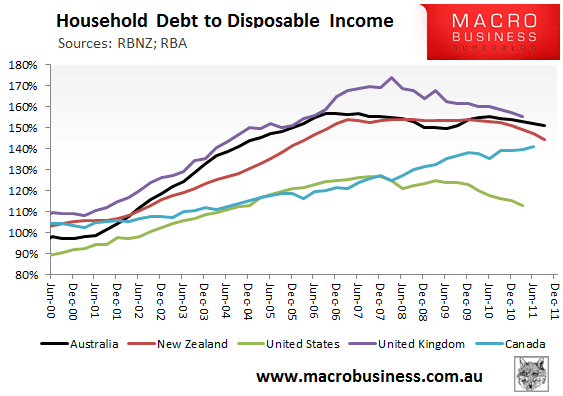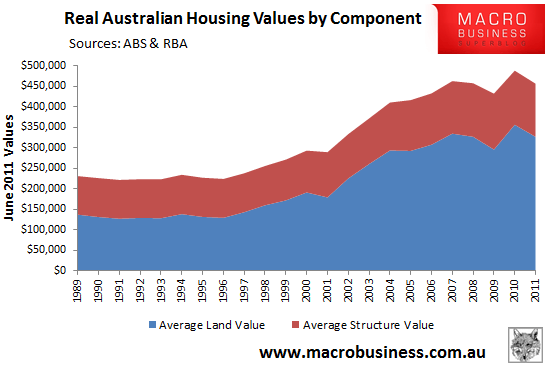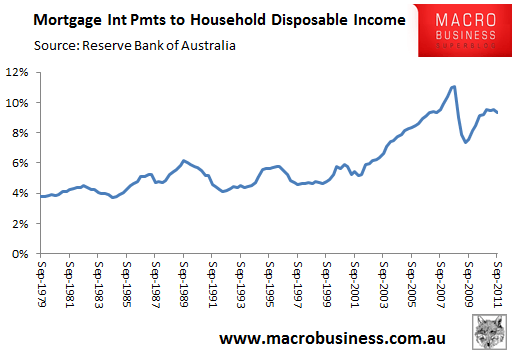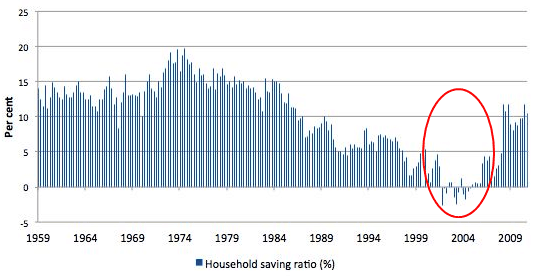
By Leith van Onselen
Back in 2004, Alan Kohler penned a ripping article in the SMH on the pernicious impact that the Howard Government’s decision in 1999 to halve the rate of capital gains tax (CGT) had on Australian house prices:
Five years ago Treasurer Peter Costello told Australians: “Work for a living and we’ll tax you at close to 50 cents in the dollar; speculate and we’ll only take 25 cents.
“Not only that but, as a special deal – while stocks last – we’ll pay half your speculating costs.”
Naturally a million Australians have started speculating on real estate. When the money ran out they borrowed more, much more. Prices doubled, so did debt…
To quote last week’s report on first home buyers by the Productivity Commission: “Like many participants [in its inquiry], the commission has concluded that these general taxation arrangements [capital gains tax, negative gearing, capital works deductions and depreciation provisions] have lent impetus to the recent surge in investment in rental housing and consequent house price increases.”
To quote Costello in response to that report: “There is no conclusive evidence that the taxation system has had a significant effect on house prices.”
To quote Blind Freddie: “Yeah, right.”
As that gentleman well knows, the effective halving of capital gains tax in 1999, combined with negative gearing and deductibility of depreciation and capital works, clearly has had a huge effect on the property market, and was also a huge mistake.
It’s been eight years, but Kohler has returned to the fold lambasting the high household debt levels that threaten Australia’s economic and social well-being:
I’ve been wondering for a while whether there is any underlying problem in this country, or just lots of little things with the exchange rate among the biggest of them.
The only thing that makes sense as a single cause of Australia’s misery is excessive debt.
Australia’s household debt as a percentage of disposable income has been stuck at 150 per cent – the highest in the world – for about five years. Twenty years ago it was 50 per cent. In other countries it has come down, albeit painfully. Interest paid as a percentage of income has doubled in 20 years.
Spot on, Mr Kohler. Australia’s household debt level is indeed very high and has tripled over the past 20 years; although it is not the highest in the Anglosphere – that honour goes to the UK (see below chart):

Kohler then moves on to questioning the high cost of land in Australia – something that I have written about many times before in relation to artificial constraints on urban land supply:
And the underlying cause of this is the high price of land in Australia. It is one of the mostly sparsely populated nations on earth, yet the cost of land is among the highest in the world, crippling the citizens with massive debts and leading to hugely profitable banks.
The combination of rising population, a lack of arable land and artificial restrictions on residential development in cities has led to a six-fold rise in the median house price since 1986, from $93,000 to $550,000 now. Over the same period, average household incomes have risen 3.5 times.
Again, Kohler is correct on this point. The overwhelming majority of appreciation in Australian house prices has been caused by rising land values rather than construction costs. This relationship is shown clearly by the below chart, which estimates average land and construction values per dwelling using ABS and RBA data:

Back to Kohler:
It’s true, as ANZ Bank’s economists pointed out in a recent paper, that mortgage rates have halved over the same period, but that doesn’t account for the psychological impact of debt that is 1.5 times income, on average, nor, more importantly, the fact that averages like these imply that many people are above average, and deep in the poo.
I have always questioned the ANZ’s claim that virtually all of Australia’s growth in house prices is accounted for by the reduction in mortgage interest rates since the late 1980s in combination with the growth of household incomes. For if this were the case, average mortgage interest payments to average household disposable incomes would not be 50% higher today than in 1989, when mortgage interest rates peaked at 17% (see below chart):

Moving on.
The result is that it’s a major problem to means test the 30 per cent health insurance rebate so that individuals earning $124,000 and families on $248,000 won’t get any help. All of a sudden lots of people on that sort of money are battlers now. Why? Because of debt.
Yes partly, but also because the Howard Government, through its numerous forms of middle-class welfare and bribes, instilled a sense of entitlement among the electorate (remember ‘Howard’s battlers’?):
Successive governments have been using the tax proceeds of the mining boom to reduce personal income tax rates, to the dismay of economists and rational commentators. But the politicians have simply been responding to the insistent demands of the electorate to do that.
Other countries in Australia’s position build massive sovereign wealth funds. Australia has a relatively small one (the Future Fund) with a specific purpose: to provide for unfunded public service pensions.
Even if they had wanted to, Australia’s politicians couldn’t have done that because of the pressure to reduce personal taxes and not increase the consumption tax and not impose death duties or other wealth taxes.
I agree with Kohler on this point. However, let’s not forget that he and his Business Spectator colleagues led the attack on the resource super profits tax (RSPT), helping to bring about its downfall and in the process worsening the Government’s tax base.
And now there is widespread terror that house prices will eventually collapse and leave millions with no equity, as happened in the United States. As a result the savings rate has skyrocketed and consumers are on strike, putting money aside for Armageddon.
This point in my view is wrong. The savings rate has merely returned to long-run trend, as shown by the below chart from Bill Mitchell. The recent credit binge and low savings rates were the exception, not the norm.

Back to Kohler.
Debt is making everyone grumpy and hypersensitive. When ANZ put up its mortgage rate by just 6 basis points last week – 0.06 per cent for heaven’s sake! – there was national outrage and attacks in parliament.
The government’s success in dealing with the GFC and holding unemployment at 5.2 per cent is nothing compared to its failure to bring down mortgage rates.
Agreed. The obsession with interest rates and house prices in Australia is crazy, reflecting household’s heavy debt burden.
Welcome back, Mr Kohler.

